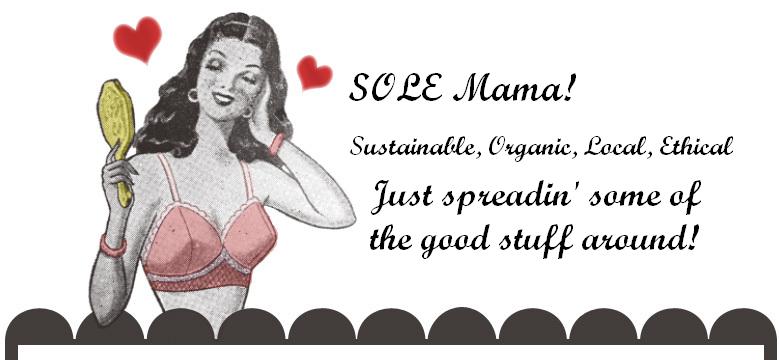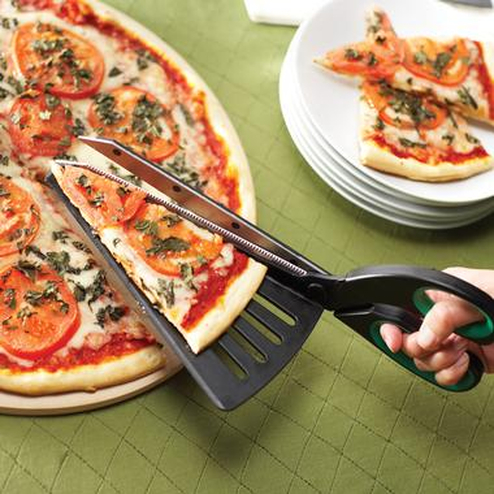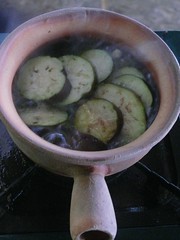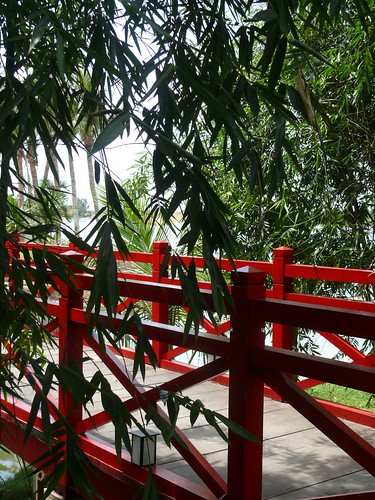
Do you know the way to San Jose?
I've been away so long. I may go wrong and lose my way.
Do you know the way to San Jose?
I’m going back to find some peace of mind in San Jose.
Kisch Tini stood resplendent in a leopard skin turban and matching one piece swimming costume in the shallows of Sorrento front beach. The light bouncing off the water glinted against ropes of gold jewelry nestling in her magnificent bosom and reflected the seascape in her bold framed sunglasses. With her feet sinking into the sand hiding gloriously scarlet toenails, and her jewel encrusted hands planted firmly on her generous hips, the dark tanned skin around her wrists was as wrinkled as an urban road map.
Tonight, Susi, her daughter in-law was making Paprikas. So Nana Tini was hurrying me, her ‘schweetie darlink’ and her ‘beeeeaudi-full grandsons’ out of the water to get across the road to Shirley, the house where I spent my childhood summers surrounded by Austro-Hungarian émigrés who had lost their children, siblings or parents in the Second World War. My not being Hungarian didn’t matter to them. I was, in my own way as alone in the world as they were, and like them, another stray to add into the collective like family, an honorary Magyar.
At Shirley, the dish of Paprikas evoked the fairy tale of the cooking pot that never emptied, that always had enough for whoever asked for a meal. At any time, a jumble of ‘relatives’ would pull up at the white, timber 1920’s beach house with gifts of food – goose or duck fat or livers, sourdough and dark rye bread, Kerueseut (Liptauer), Csabai (Salami), Preserved peppers, foraged or home grown items, pickles, home-made tomato paste, eggs, cheese, Kughelupf (Bundt cake)- whatever they had. And they were always greeted by Susi, with cries of “Can I offer you something to eat Mutsi? Some cake, a toast, something for you?”
For a crowd, Paprikas – Paprika Chicken with sour cream and caraway – served with Nokedli (Spaetzle) or sometimes Rakott Krumpli (Scalloped potatoes) with dill cucumber or zucchini salad was always on the menu. It was our comfort food. Our family fare. Food to be shared by people who did not judge, who loved openly, shouted boisterously at each other, who loved passionately and married many times; food that anchored us in our joys and our sentiments.
Whenever I feel that the world is slipping out from under my feet, I go instinctively to the fridge, pull out paprika paste and begin to make Paprikas. Only then, does the vortex of life’s complications begin to feel less claustrophobic as I fall into the rhythm of a tradition I have inherited from dear and generous souls.

It was with this embedded in my psyche, that on Sunday, when Bruce our waiter at Sunnybrae announced that George Biron was offering Paprikas as one of the main courses, a warm golden happiness shimmered from my heart.
I was already trembling with the excitement of being at Sunnybrae, talking to George, meeting Di, Angela and the rest of the gang, that I felt sure that I would surely spill my food down my front. George said to me “Have a drink, and calm yourself’.
The moment of calm came when Bruce brought to the table potato bread fresh from the wood oven, Sunnybrae’s extra virgin olive oil and a dish of their delicate home grown Alberquina olives. Sinking my teeth into the bread, I realized why Susi had always offered food whenever someone crossed the threshold. Focused on honest flavours, a crowd of jostling thoughts can easily dissipate in a primal and nurturing way.
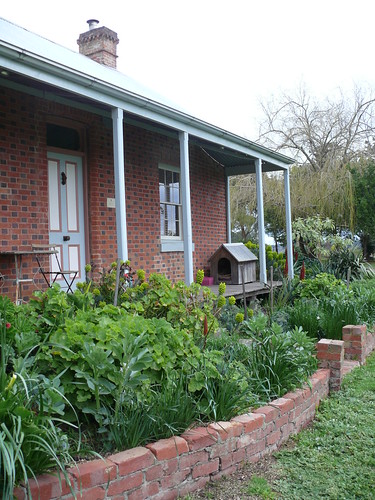
Sunnybrae for me was like stepping into the home I’d always dreamed of but never had. It has innate warmth, a strength that comes from depth of friendship and an exuberance emanating from both Di and George’s personalities and skills, whether in the garden, artistically or culinary. It made me feel that I have not yet found the things in my heart that should ground me, that I am still a nomad on the path of my own discovery.
Just ninety minutes on the highway from our home, Birregurra was a simple drive, arriving at Sunnybrae in time for Sunday lunch. The meal stretched out over multiple courses with intermittent strolls in the garden, hanging out by the woodfired oven with Kenny the cat and a cuddle with another gorgeous black feline in the veggie patch. By the time we left we had been there six hours. We were of course, the last to leave and as the darkness crept in I went home with a happy heart.
For those who do not know of Sunnybrae, celebrated Chef George Biron and his partner Di quit the rat race for Birregurra many years ago and set up a country cottage with a dining room seating 65 and a purpose built kitchen for the restaurant and cooking classes.

George’s kitchen is charged with positivity. It’s light colourful and airy. Di has created a magnificent collage on one of the doors, there is a wonderful feature painting and the blue and yellow colour scheme in the room lifts the space from utilitarian to being a place to happily create. All hands on deck seem to work fluidly and there is an unspoken trust that sews it together.
Long before the current crop of feted Chef’s were recently anointed as forward thinking by the media for having kitchen gardens and small farms to grow their own fare, George was doing it for himself. Before Maggie Beer and Simon charmed TV audiences with regional fare and before the 100 Mile Café was an idea, George was there. In fact he could be referred to as Melbourne’s Godfather of SOLE.
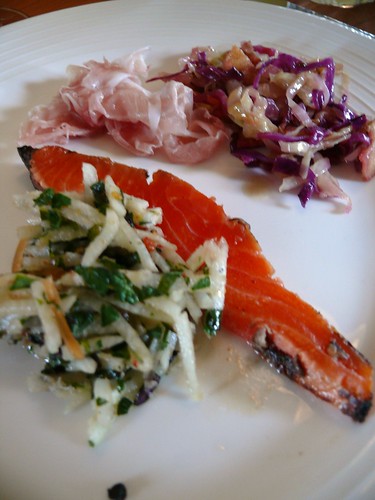
In the Mittle European tradition he is a forager from way back, grows as much of his own food as possible with the remainder sourced locally within the region and from backyard artisans. Some produce is traded for others or for contra and the provenance of the food is exemplary.
George’s touch has reached many regional venues. Eight years ago they closed seven day operations at Sunnybrae’s restaurant and George instead began to consult, setting up kitchens for other venues, while Di focused on her Art. Time on the road takes its toll and Sunnybrae has such charisma that this year, luckily for us, George and Di decided to reopen. With slight modifications to the space service is open for lunch on Saturday and Sunday. Cooking classes are held on Monday.
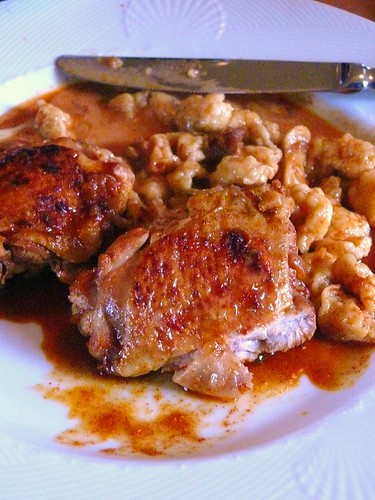
So how was the Paprikas? Like everything that day, it was faultless. Two succulent pieces of chicken and their rich paprika sauce scented with caraway sat on the plate with delicate Nokedli. In one side dish, cucumber and peppers formed a classic accompaniment to the meat, along with another small bowl containing sour cream to melt into the sauce.
When Mr Sticky stopped eating, I realised with a sinking heart that as we always share whatever we eat, I was about to have to part with my plate of delicious sentiment midway through eating it. To lose it was indeed a tug, but the rabbit dish he had chosen was also exemplary. A robustly delicious rabbit fillet wrapped in juniper scented minced rabbit, bound with caul is one of George’s signature dishes. I mopped up the sauce with glee.
For full details of what we ate and what it cost, please visit the restaurant section of the forum at SOLE Mama called The Dining Room.
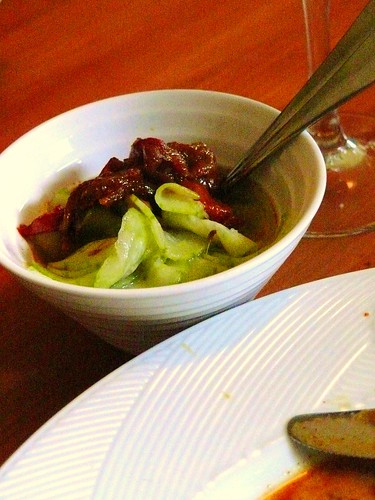
The sum of the courses easily made this the best meal I had eaten in a long time. To enjoy George and Angela’s food at Sunnybrae is to totally understand why it is I bang on about eschewing processed food, eating local produce direct from the producer and why some restaurants disappoint me.
A visit to Sunnybrae is a must for all who wish to grasp how good simple fare can truly be. Here you see ingredients we have forgotten how to cook and techniques that are honest. In fact to eat here is to have a reality check about how modern dining is too often full of hang ups and neuroses. The fresh food used at Sunnybrae is innately flavoursome and George strikes a respectful balance between the use of unusual produce and inspirational culinary execution, free of pretension and faddishness.

And while service front of house in bucolic environs is often forgettable, we had a marvelous time being taken care of by Bruce in the private room overlooking the courtyard and wood oven.
I strongly suggest you do yourself a favour and visit Sunnybrae. We’re planning to visit again soon. Who knows what nostalgic musings it will unearth in me next?
I've got lots of friends in San Jose
Do you know the way to San Jose?
Can't wait to get back to San Jose.
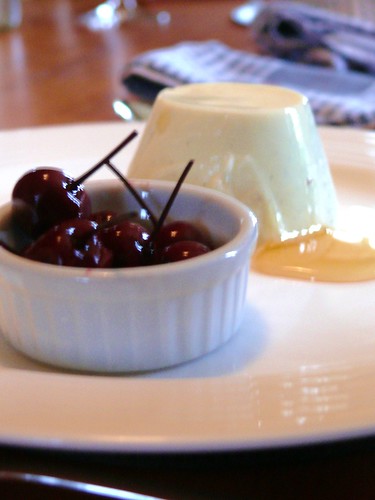
Corner of Cape Otway Road & Lorne Rd, Birregurra, Australia
Ph: 052 36 2276

